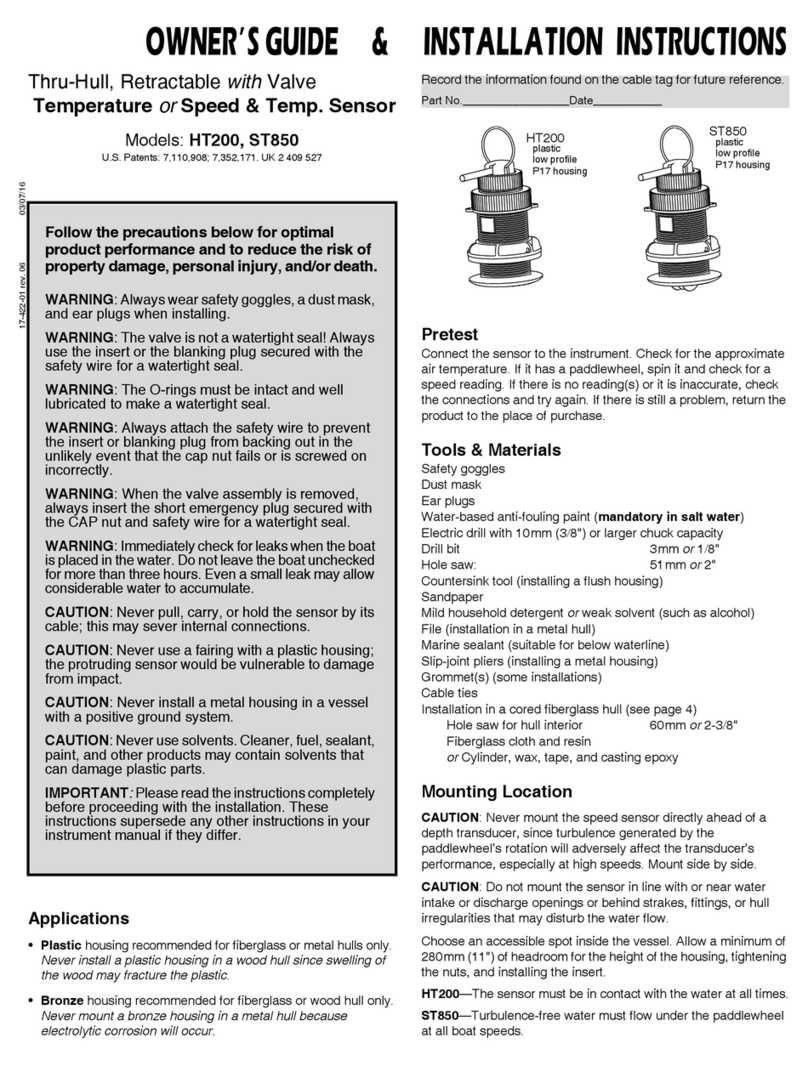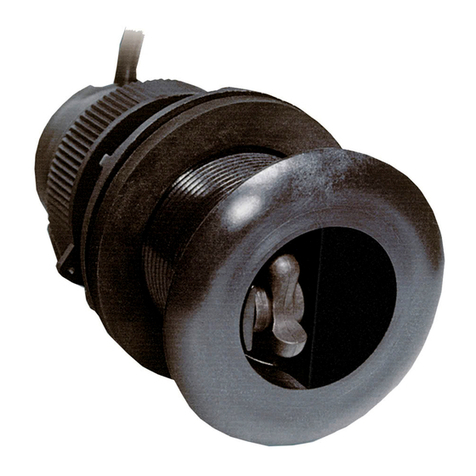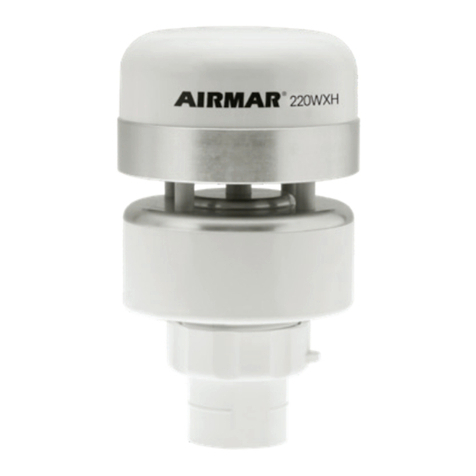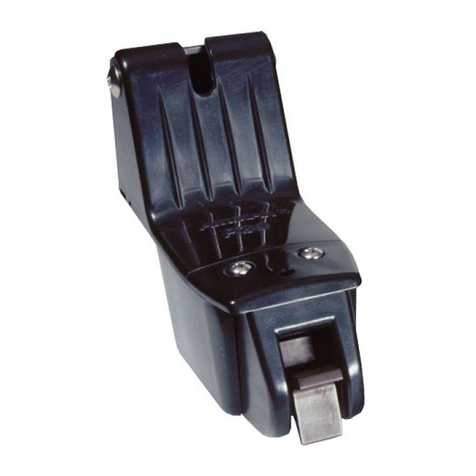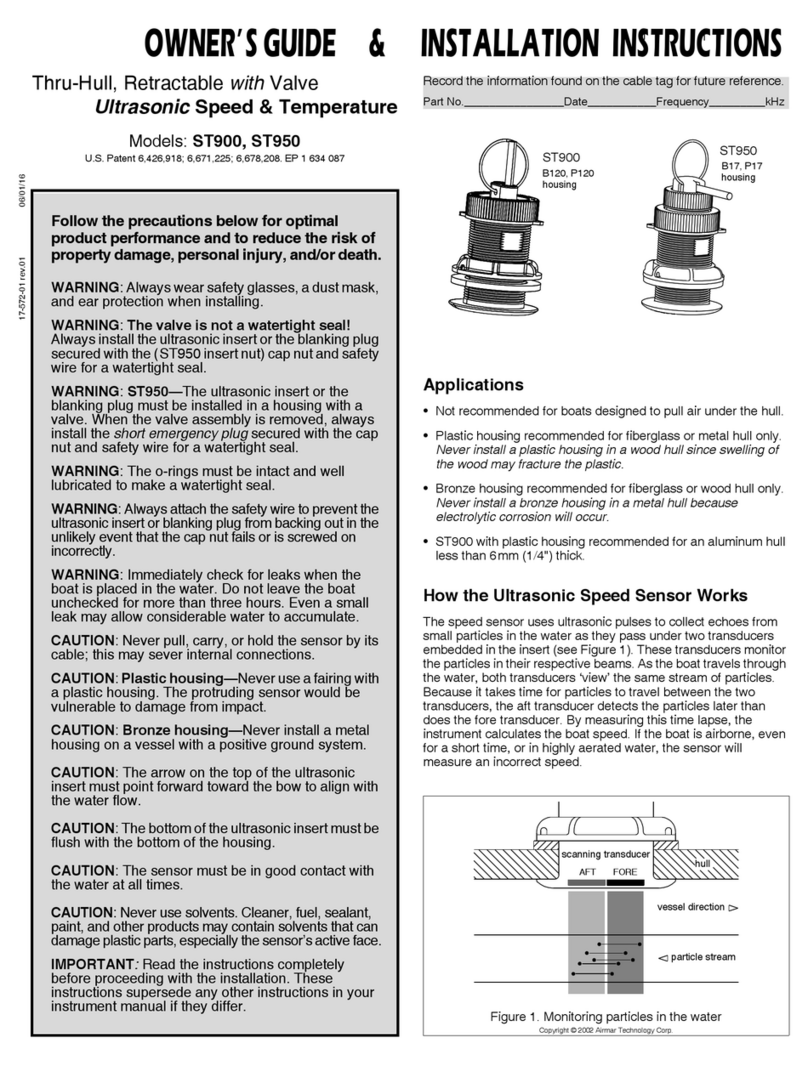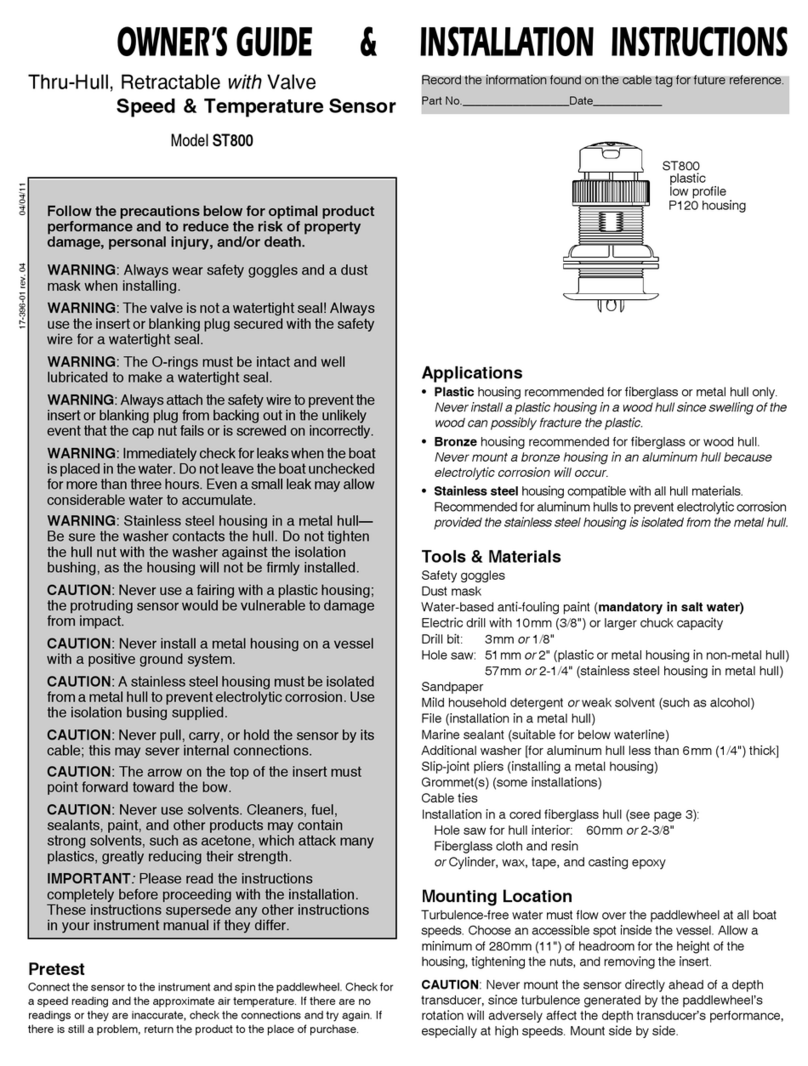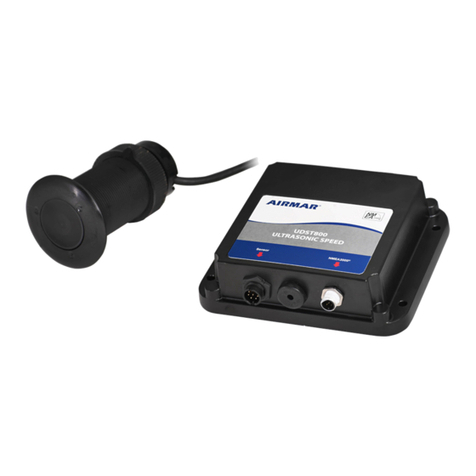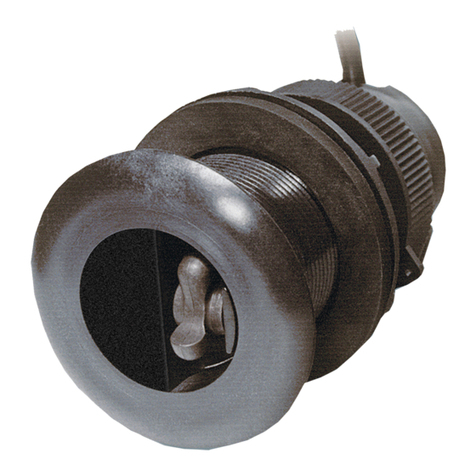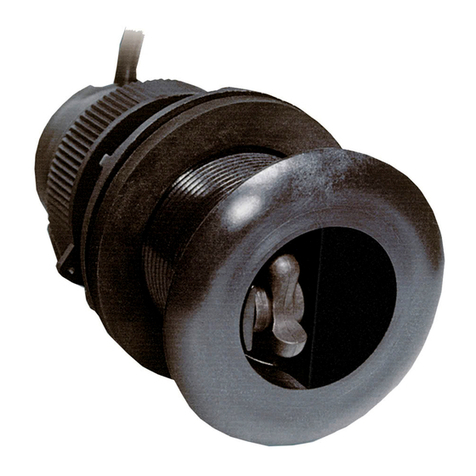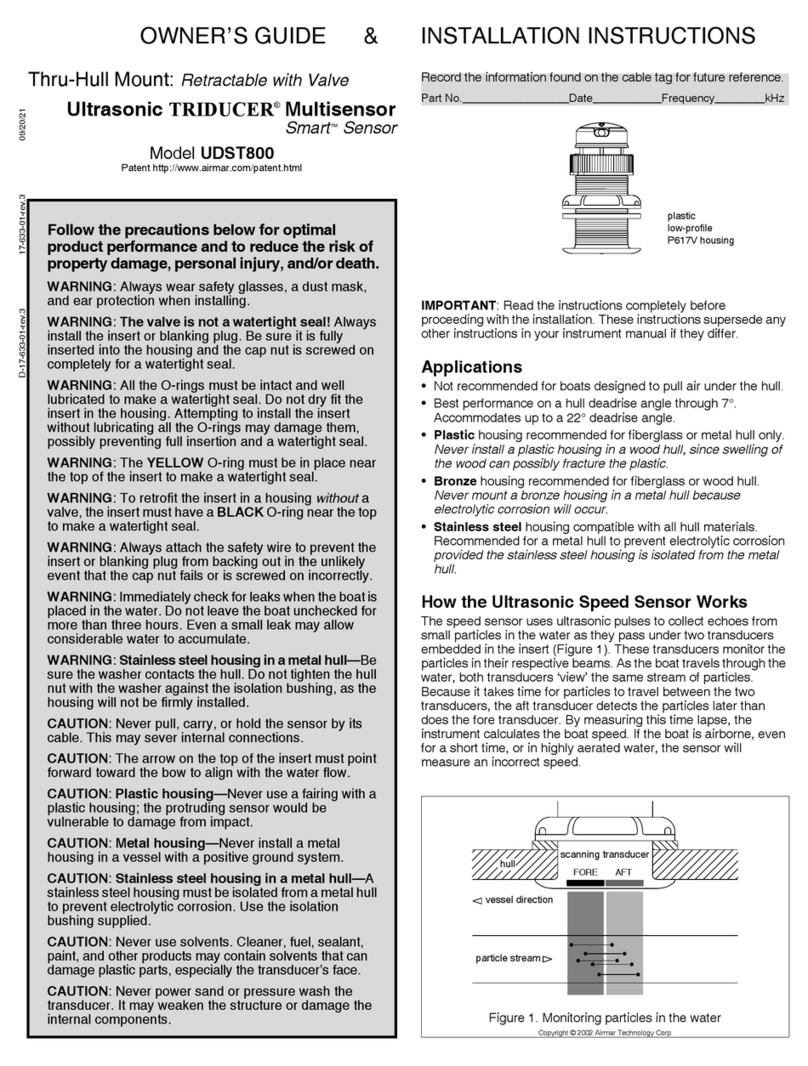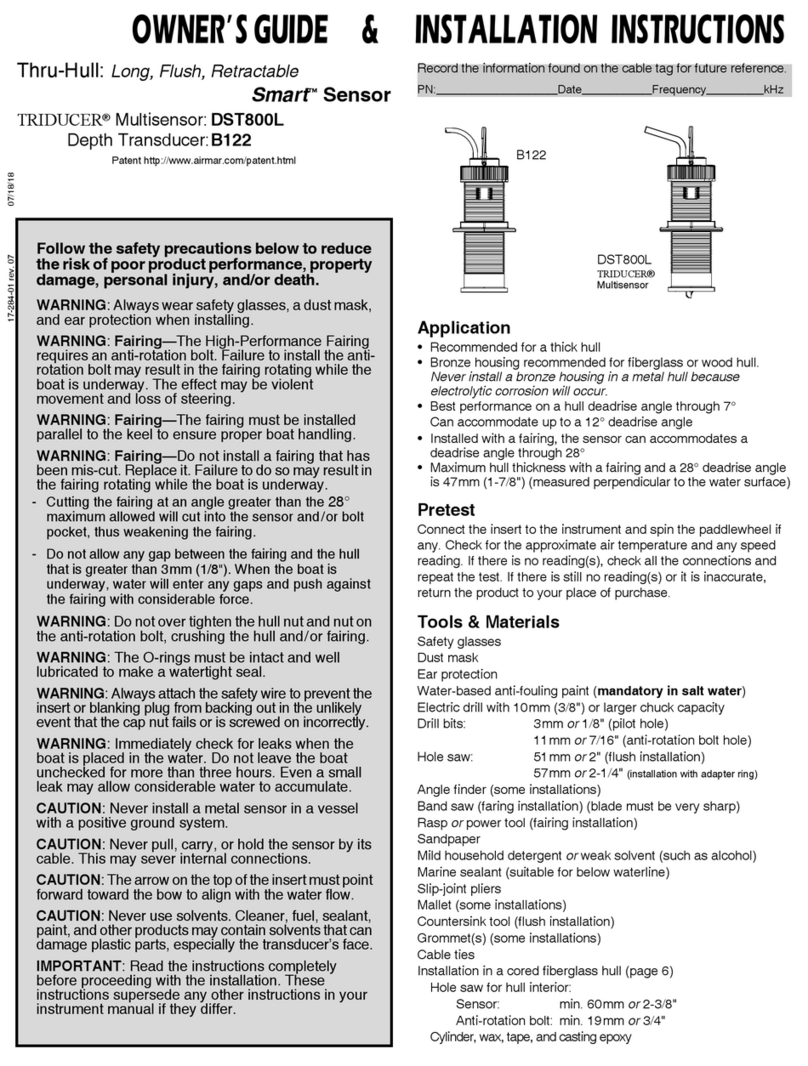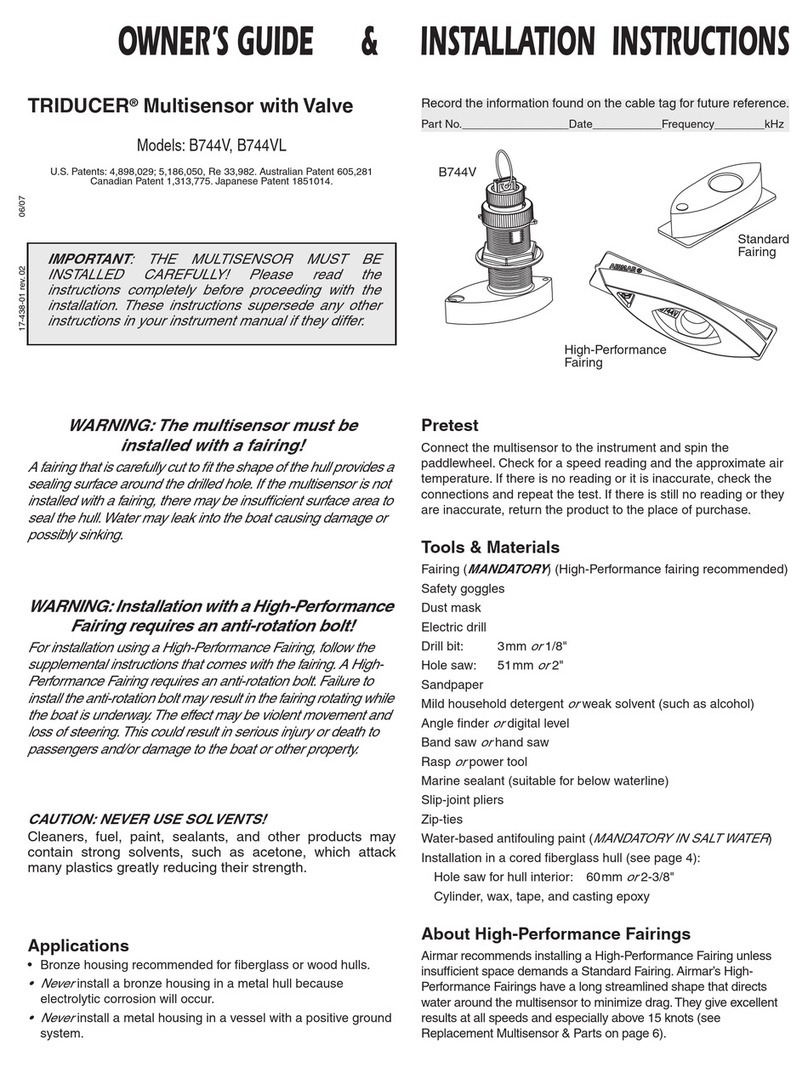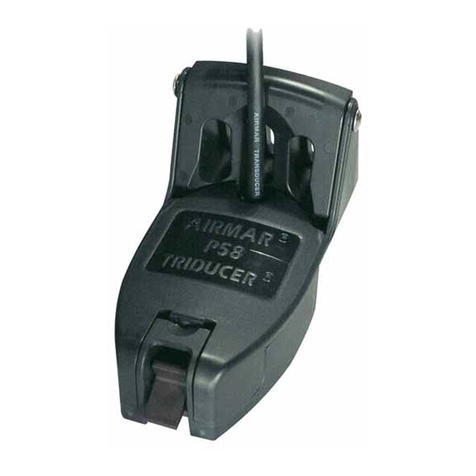
Bedding
Caution
: Never pull, carry, or hold the sensor by the cable as this
may sever internal connections.
Remove the hull nut (see Figure 1). Apply a 2 mm (1/16") thick
layer of marine sealant around the lip of the housing that will
contact the hull and up the stem. The sealant must extend 6mm
(1/4") higher than the combined thickness of the hull and the hull
nut. This will ensure that there is marine sealant in the threads to
seal the hull and hold the hull nut securely in place.
Installing
1. From outside the boat, thread the cable through the mounting
hole.
2. Push the sensor into the mounting hole using a twisting motion
to squeeze out any excess sealant (see Figure 1).
3. From inside the hull, slide the hull nut onto the cable. Screw the
hull nut in place. Tighten it with slip-joint pliers.
Wood hull
—Allow for the wood to swell before tightening.
Cored fiberglass hull
—
Do not over tighten,
crushing the hull.
4. Remove any excess marine sealant on the outside of the hull to
ensure smooth water flow over the sensor.
Checking for Leaks
Warning
: DO NOT leave the boat in the water unchecked for
several days.
When the boat is placed in the water,
immediately
check around
the thru-hull sensor for leaks. Note that very small leaks may not
be readily observed.
Do not
to leave the boat in the water for more
than 3 hours before checking it again. If there is a small leak,
there may be considerable bilge water accumulation after 24
hours. If a leak is observed, repeat “Bedding” and “Installing”
immediately
(see page 2).
Installation in a Cored Fiberglass Hull
The core (wood or foam)
must
be cut and sealed carefully. The
core
must
be protected from water seepage, and the hull
must
be
reinforced to prevent it from crushing under the hull nut allowing
the housing to become loose.
Warning
: Always wear safety goggles and a dust mask.
1. Drill a 3mm or 1/8" pilot hole from inside the hull. If there is a rib,
strut, or other hull irregularity near the selected mounting
location, drill from the outside. (If the hole is drilled in the wrong
location, drill a second hole in a better location. Apply masking
tape to the outside of the hull over the incorrect hole and fill it with
epoxy.)
2. Using the 21mm or 7/8" drill bit, cut a hole from outside the hull
through the
outer
skin only (see Figure 2).
3. From inside the hull using the 30mm or 1-1/4" hole saw, cut
through the
inner
skin and most of the core. The core material
can be very soft. Apply only light pressure to the hole saw after
cutting through the inner skin to avoid accidentally cutting the
outer
skin.
4. Remove the plug of core material so the
inside
of the outer skin
and the inner core of the hull is fully exposed. Clean and sand
the inner skin, core, and the outer skin around the hole.
Caution
: Completely seal the hull to prevent water seepage into
the core.
5. Coat a hollow or solid cylinder of the correct diameter with wax
and tape it in place. Fill the gap between the cylinder and hull
with casting epoxy. After the epoxy has set, remove the cylinder.
6. Sand and clean the area around the hole, inside and outside, to
ensure that the sealant will adhere properly to the hull. If there is
any petroleum residue inside the hull, remove it with either mild
household detergent or a weak solvent (alcohol) before sanding.
7. Proceed with “Bedding” and “Installing” (see page 2).
2
Figure 2. Preparing a cored fiberglass hull
inner skin
core
outer skinsolid or hollow cylinder
pour in
casting
epoxy
9-12 mm
(3/8-1/2")
larger than the
hole through the
hull’s outer skin
hull thickness
Figure 1. Bedding and installing
hull nut
hull
bedding
Copyright © 2005 Airmar Technology Corp. Copyright © 2005 Airmar Technology Corp.
